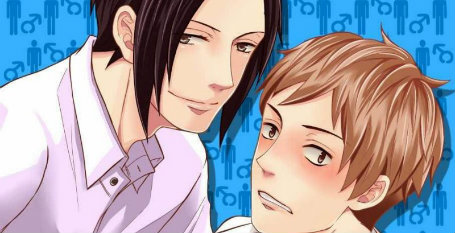Anime tales featuring man-on-man passion is becoming more popular among Japanese women who view love between same-sex couples as pure love.
“BL (Boy’s Love) is not gay. This is the most important thing you need to know,” said Hana, a woman taken up with fictional stories that detail the romantic entanglements of two men, according to Brandon Presser, a writer for thedailybeast.com.
While the cover art of most BL-themed comics may depict two males embracing and which may be construed as gay romance to foreigners, it’s all about “pure love,” she said.
Hana is one of the many burgeoning group of ardent manga (comic book) and anime (animation) women who are taken up with gay romance. This group even calls themselves “fujoshi” a pun on respectable women to men “rotten girls” in Japanese who love their Boys’ Love romance.
“We self-deprecatingly call ourselves rotten girls because we indulge in this obsession with pure love even though society tells us that it’s a waste of our time,” Hana says.
Nonetheless, they have their own special meeting place at Tokyo’s Otome Road or “Maiden’s Road” -- a wide boulevard with a line of animation-related boutiques selling figurines and thousands of comic books.
“In fact, the entire genre itself is squarely targeted at a straight female readership and is almost always created by female artists as well,” wrote Brandon Presser.
For Hana, the appeal of BL is largely about the beauty of what she calls a “genderless love” because she can’t consciously or subconsciously insert herself into the narrative as would be the case if it were about love between a boy and girl. Moreover it is unlike romance between a boy and girl that comes with pressures such as marriage and pregnancy which can negate the purity of romantic desire.
Patrick Galbraith, a researcher at Sophia University who has spent years in Tokyo studying BL superfandom has calculated that this genre has grown to rake in more than US$120 million annually and accounts for about 4 percent of all printed manga in Japan, according to thedailybeast.com.
Galbraith estimates that there are over a million “rotten girls” in Japan for whom Boys’ Love is also called yaoi in Japanese, an acronym used to refer to a homoerotic relationship of two males for a female audience.
Same-sex relations were legalized way back in 1880 in Japan and although Japanese culture does not have a history of hostility toward LGBT people, they nonetheless lack legal recognition and are often subjected to social discrimination.
A recent nationwide poll found a little more than half of those polled saying that they oppose same-sex marriage, which is not legally recognized in Japan.
Anime tales featuring man-on-man passion is becoming more popular among Japanese women who view love between same-sex couples as pure love.
“BL (Boy’s Love) is not gay. This is the most important thing you need to know,” said Hana, a woman taken up with fictional stories that detail the romantic entanglements of two men, according to Brandon Presser, a writer for thedailybeast.com.
While the cover art of most BL-themed comics may depict two males embracing and which may be construed as gay romance to foreigners, it’s all about “pure love,” she said.
Hana is one of the many burgeoning group of ardent manga (comic book) and anime (animation) women who are taken up with gay romance. This group even calls themselves “fujoshi” a pun on respectable women to men “rotten girls” in Japanese who love their Boys’ Love romance.
“We self-deprecatingly call ourselves rotten girls because we indulge in this obsession with pure love even though society tells us that it’s a waste of our time,” Hana says.
Nonetheless, they have their own special meeting place at Tokyo’s Otome Road or “Maiden’s Road” -- a wide boulevard with a line of animation-related boutiques selling figurines and thousands of comic books.
“In fact, the entire genre itself is squarely targeted at a straight female readership and is almost always created by female artists as well,” wrote Brandon Presser.
For Hana, the appeal of BL is largely about the beauty of what she calls a “genderless love” because she can’t consciously or subconsciously insert herself into the narrative as would be the case if it were about love between a boy and girl. Moreover it is unlike romance between a boy and girl that comes with pressures such as marriage and pregnancy which can negate the purity of romantic desire.
Patrick Galbraith, a researcher at Sophia University who has spent years in Tokyo studying BL superfandom has calculated that this genre has grown to rake in more than US$120 million annually and accounts for about 4 percent of all printed manga in Japan, according to thedailybeast.com.
Galbraith estimates that there are over a million “rotten girls” in Japan for whom Boys’ Love is also called yaoi in Japanese, an acronym used to refer to a homoerotic relationship of two males for a female audience.
Same-sex relations were legalized way back in 1880 in Japan and although Japanese culture does not have a history of hostility toward LGBT people, they nonetheless lack legal recognition and are often subjected to social discrimination.
A recent nationwide poll found a little more than half of those polled saying that they oppose same-sex marriage, which is not legally recognized in Japan.

